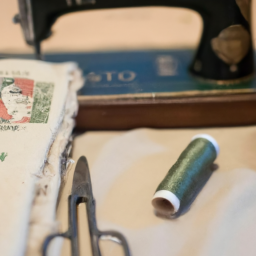
History of Hand Stitching
The Ancient Origins
Hand stitching, an intricate technique of joining fabrics or materials using a needle and thread, has been a fundamental part of human culture for thousands of years. Its roots can be traced back to ancient times when the earliest civilizations discovered the importance of sewing for survival.
Archaeological evidence suggests that hand stitching existed in civilizations like Ancient Egypt, where sewn garments have been found in tombs dating back to 5000 BCE. Similarly, hand stitching techniques were practiced in Mesopotamia, Ancient Greece, and Ancient Rome, where advanced sewing skills were passed down through generations.
The Medieval Period
During the medieval period, hand stitching played a significant role in Europe. With the rise of feudalism, certain individuals dedicated themselves to various crafts, including sewing. Guilds were formed to regulate and enhance the quality of hand-stitched products.
Embroidery, a form of decorative hand stitching, flourished during this time. Intricate designs adorned clothing, tapestries, and ecclesiastical garments, showcasing the skills and artistry of the craftsmen.
The Industrial Revolution and Beyond
The dawn of the Industrial Revolution in the 18th century brought significant changes to the world of hand stitching. The invention of the sewing machine revolutionized the textile industry, making mass production possible. However, despite the emergence of machines, hand stitching remained important as it allowed for delicate and precise work.
By the late 19th century, sewing machines had become more accessible, leading to a decline in the use of hand stitching for basic garment construction. Nevertheless, the art of hand stitching continued to thrive in haute couture, tailor-made suits, bespoke creations, and various traditional crafts.
Contemporary Hand Stitching
In recent years, hand stitching has experienced a resurgence due to the increased interest in sustainable fashion and the appreciation for artisanal techniques. Many individuals are rediscovering the joy of creating and repairing garments by hand, fostering a sense of connection to heritage and craftsmanship.
Contemporary hand stitching techniques encompass a wide range of styles, such as cross-stitch, embroidery, quilting, and various decorative stitches. Artists and designers often incorporate hand stitching into their designs, adding a unique touch and elevating the aesthetic value of their creations.
The Enduring Craftsmanship
Through millennia, hand stitching has persevered as an essential part of human culture. From practical applications in everyday life to artistic expressions, it has continuously adapted and evolved while preserving its timeless charm and versatility.
As we embrace the digital age, the art of hand stitching remains a cherished tradition, representing the connection between the past and the present, and fueling the creativity of countless individuals who appreciate the beauty of craftsmanship.




